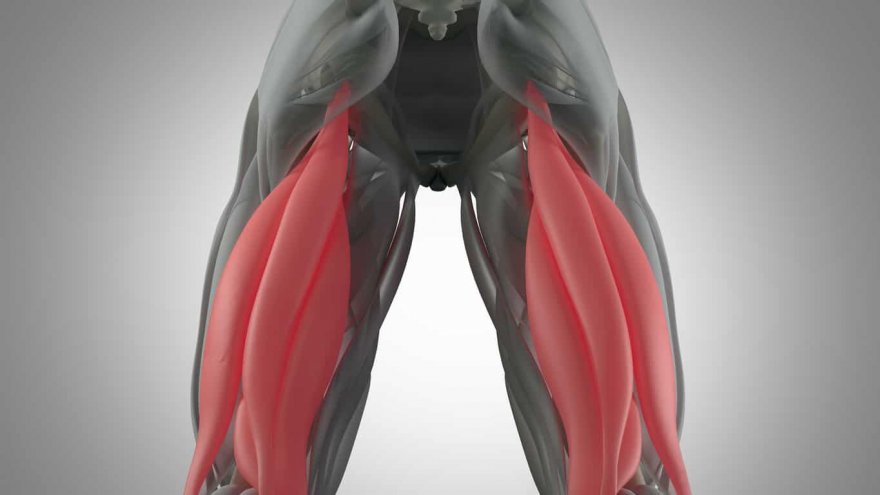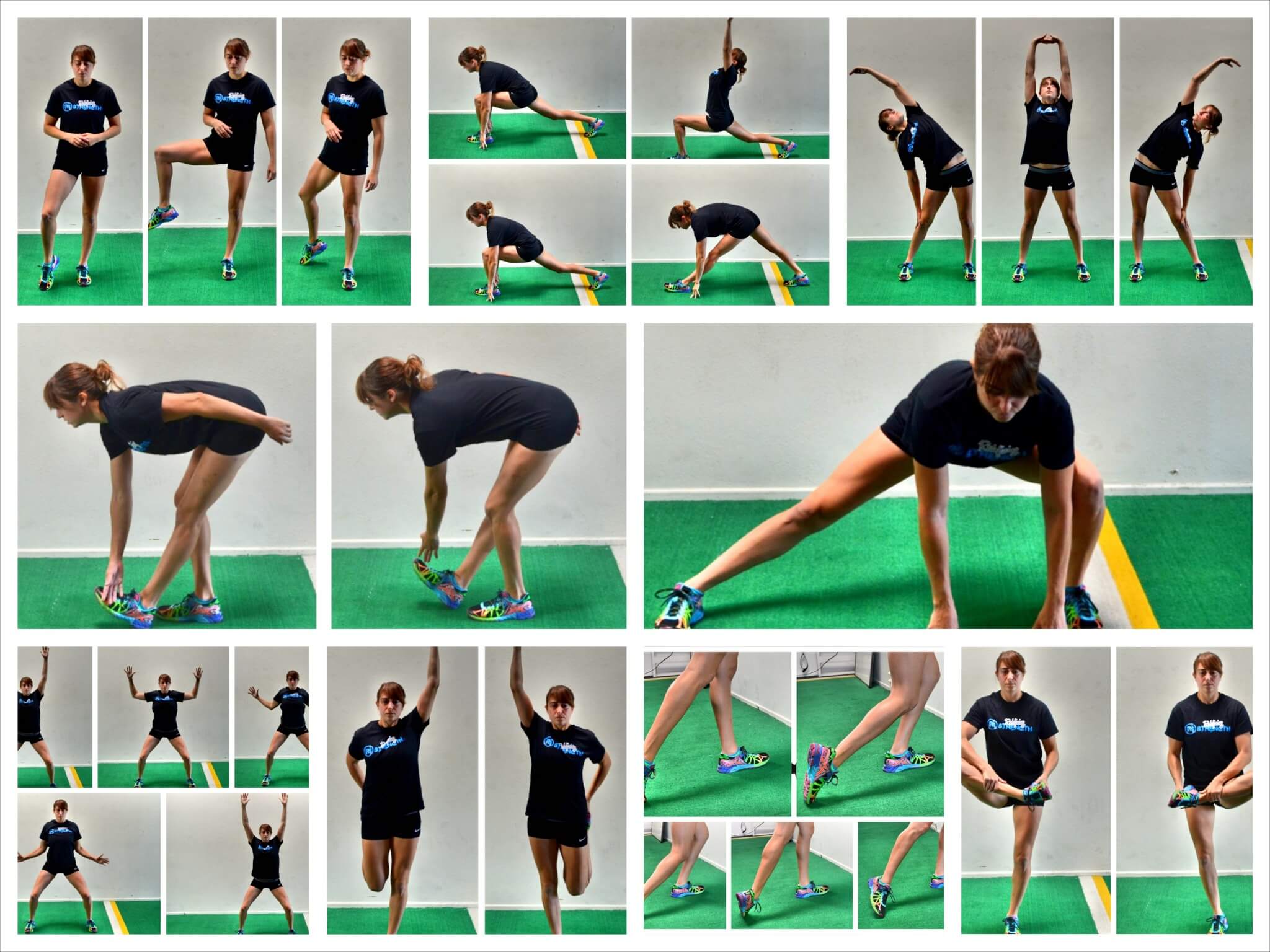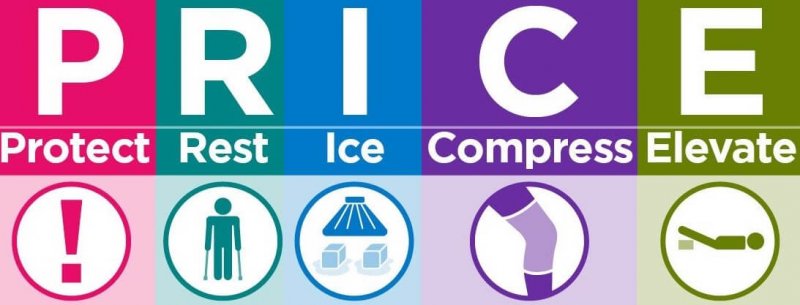Sore Hamstrings: Runner’s Guide to Tight Hamstring Prevention

Sore hamstrings can affect just about any athlete, recreational or professional, who participates in a sport that requires a quick transition between the starting and stopping of running and jumping, like basketball, football, tennis, and soccer.
But, it can also affect runners, dancers, and skaters. Prevention is number one on my list and I will provide you with a guide to prevent tight hamstrings.
Your hamstrings are the 3 muscle groups at the back of your thigh that help you bend at the knee, extend your leg straight behind you, and stabilize the knee joint.
This is the reason why your hamstring is a common area to experience soreness, tightness, or strain. Preventing a hamstring injury is very important because these injuries are slow to heal and prone to reoccur.
Preventing Sore & Tight Hamstrings
When you are about to go for a run or any exercise, you want to make sure you allow yourself 10-15 minutes to warm up. So, you can give your muscles time to prepare themselves for the workout they are about to endure.
- Practicing strength training
- Stretching
- Eat a balanced diet
- Hydration
- Gradually increase exercise intensity
- Stop exercising if you feel pain in your hamstring
Strength training and performing calisthenics can help you to prevent having muscle imbalance. When the muscles in your quads are stronger than your hamstrings, this is a muscle imbalance. This imbalance can lead to injuries or soreness.
Use your Primary Care Provider (PCP) as a resource, they may be able to suggest a Physical Therapy who will be able to suggest workout routines that can help to strengthen your muscle groups and evaluate your form to help prevent future soreness, injury, or re-injury.
It is recommended that you stretch 3-5 minutes before and after your run. Dynamic stretching is helpful prior to running and static stretching is more helpful after runs.
Dynamic stretches are stretching in motion, like:
- Leg swings to the front
- Leg swings to the side
- High knees
- March and reach up
- Plank and walkup

While static stretching is when you position yourself in a pose and you hold that pose for 20-30 seconds. Such as:
- Standing toe touch
- Sitting toe touch
- Pigeon pose
- Hamstring stretch
- Bridge pose
Gradually increasing exercise, stretching, and strengthening your muscles to making sure they can handle the exercises you are performing is a great way to prevent injury. Also, do not and I repeat do not continue running or exercising if you feel any pain in your hamstrings.
An amazing tension relieving tool is the foam roller. After doing your workout or going for a run whip out your foam roller. These tools are great at relieving tension in your muscles and decreasing or preventing sores. And it can be used on your calf muscles, shins, quads, hamstrings, and glutes.
Then, if you would like a more hands-on approach to decreasing your tight hamstrings, try a massage therapist. Adding a skilled massage therapist to your routine is so helpful at not only easing tension in your muscles but from life. We all hold tension in different places and getting a massage can be a therapeutic solution to tightness.
Causes of Hamstring Soreness and Injury
When the hamstring is stretched beyond its range of flexibility you can experience pain, soreness, swelling, bruising, stiffness, and weakness. You may even feel popping or tearing.
The possible causes are:
- Not warming up at least 10 minutes before the activity
- Weak glutes
- Muscle imbalance
- Previous injury
- Poor flexibility
- Workout fatigue
Hamstring soreness or pain can range from mild aching to your inability to put weight on the leg that is injured. If you are unable to put weight on either leg or are unable to walk after 4 steps, you need to consult your PCP for further evaluation.
Sore Hamstrings Treatment
The severity of your hamstring injury or soreness will determine your treatment. Hamstring injuries are categorized as mild, moderate, and severe. The treatments below will help with mild hamstring injuries that result in slight pain and minimal changes in your ability to perform daily activities.

PRICE is the treatment acronym to keep in mind.
- P- Protect
- R- Rest
- I- Ice
- C- Compression
- E- Elevation
With a new injury, you will want to make sure you protect the area by limiting your range of motion to what you can tolerate without pain. Remember this area is slow to heal and too much stretching to the area could lead to the formation of scar tissue.
Avoid any strenuous activity for at least 48 hours. Ice the area for 15-20 minutes 4-8 times a day with a protective barrier (towel) between your skin and the ice pack.
Evenly apply pressure to the injured area with an elastic bandage or wrap to help decrease swelling. Lastly, elevate the leg with the sore hamstring above your heart to aid in swelling.
While icing your leg sit on the table and slowly lift your leg parallel to the floor and lower it. Then, when you are done icing your leg, lie on your stomach and extend your leg and bend it. Do not overdo either of these exercises and stop if you experience any pain.
Try using crutches to help you stay off of the injured leg. Non-Steroidal anti-inflammatory drugs (NSAIDs), like ibuprofen, acetaminophen, or naproxen, may be used for 5 to 7 days for pain relief.
But, if you are still experiencing pain and swelling after 3 days, call to make an appointment with your PCP.
Bringing It All Together
If you have previously had a hamstring injury, it is important to allow your body to fully recover before resuming exercise because a prior injury puts you at an increased risk of having another injury to your hamstring.
So, it is important that you do not return to your previous level of exercise until you can walk, jog, run, sprint, and finally jump without any pain. And this means your leg needs to be as strong and have the range of motion you had before the injury.
Sources
- , Hamstring Injury, Clinic
- , Hamstring injury, Clinic
- , Anatomy, Bony Pelvis and Lower Limb, Hamstring Muscle, Book
- , Hamstring Strain, Medical Website
Latest Articles
 Is Running on a Treadmill Easier Than Running Outside?Runners have their own preferences, whether it is treadmill running, running outside on the road, or exploring trails. So...
Is Running on a Treadmill Easier Than Running Outside?Runners have their own preferences, whether it is treadmill running, running outside on the road, or exploring trails. So... Is It OK to Use Trail Running Shoes on the Road?While trail running shoes can be used on roads, especially in situations where a runner encounters mixed terrains or pref...
Is It OK to Use Trail Running Shoes on the Road?While trail running shoes can be used on roads, especially in situations where a runner encounters mixed terrains or pref... How to Fix Sore Quads After Running?Rest, ice, gentle stretching, and over-the-counter pain relievers can help soothe sore quads after running. Also, ensure ...
How to Fix Sore Quads After Running?Rest, ice, gentle stretching, and over-the-counter pain relievers can help soothe sore quads after running. Also, ensure ... 10 Fruits With The Most Electrolytes to Replace Sports DrinksThese fruits are high in electrolytes such as potassium, magnesium, and calcium, essential for hydration, muscle function...
10 Fruits With The Most Electrolytes to Replace Sports DrinksThese fruits are high in electrolytes such as potassium, magnesium, and calcium, essential for hydration, muscle function...

